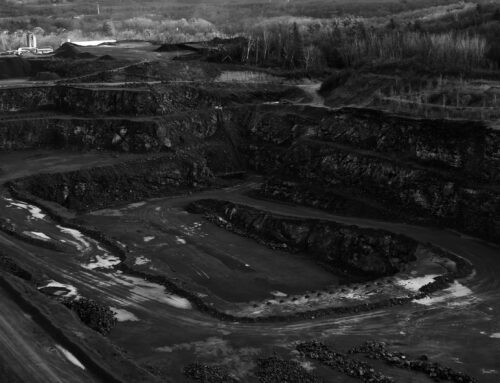
Pandit Jawaharlal Nehru, India’s first Prime Minister, is often hailed as the architect of modern India. His visionary leadership and unwavering commitment to nation-building laid the foundation for India’s economic development. Nehru’s economic policies, though criticized by some, were instrumental in shaping India’s industrial landscape and laying the groundwork for future growth.
Key Economic Initiatives Under Nehru’s Leadership:
Industrialization and Infrastructure Development
- Five-Year Plans: Nehru introduced the system of Five-Year Plans, a cornerstone of India’s economic strategy. These plans aimed at rapid industrialization, agricultural development, and social upliftment.
- The First Five-Year Plan (1951-1956) was the first of a series of economic plans implemented by the Indian government. It was based on the Harrod-Domar model and aimed at achieving rapid economic growth through investment in agriculture and basic industries. The plan prioritized increasing agricultural production, developing irrigation facilities, and expanding the power sector. The focus on agriculture led to significant improvements in food production and reduced reliance on imports.
The Second Five-Year Plan (1956-1961) shifted its focus towards heavy industries, aiming to establish a strong industrial base. This plan emphasized the establishment of steel plants, machine-building industries, and power generation. While it achieved some success in industrial development, it also faced challenges such as foreign exchange shortages and inflationary pressures. Despite these challenges, the Second Five-Year Plan laid the foundation for India’s industrialization and contributed to the country’s economic growth.
Nehru faced several challenges in implementing the Five-Year Plans:
1. Financial Constraints: India inherited a fragile economy from British colonial rule. The government had limited financial resources to fund large-scale development projects. To overcome this, Nehru’s government relied on foreign aid, domestic savings, and public-sector borrowing.
2. Administrative Capacity: India lacked a robust administrative structure to efficiently implement and monitor the plans. Bureaucratic inefficiency and corruption hindered progress. To address this, the government invested in capacity building and established new institutions to oversee planning and implementation.
3. Technological Limitations: India’s industrial base was underdeveloped, and technological know-how was limited. To overcome this, the government encouraged foreign investment, technology transfer, and the establishment of technical institutions to develop skilled manpower.
4. Social and Political Challenges: India was a diverse country with deep-rooted social and political divisions. Caste-based inequalities, regional disparities, and political instability posed challenges to the implementation of the plans. The government attempted to address these issues through land reforms, social welfare programs, and promoting national integration.
5. External Factors: Global economic conditions, such as fluctuations in commodity prices and international trade, impacted India’s economy. Additionally, geopolitical tensions and conflicts could disrupt economic progress. The government had to adapt to these external factors and take measures to mitigate their impact.
Despite these challenges, Nehru’s government made significant progress in industrialization, agricultural development, and infrastructure development through the Five-Year Plans. While the plans had mixed results and faced criticism, they laid the foundation for India’s economic growth and social development in the decades to come.
-
-
- Steel Authority of India Limited (SAIL)
- Bharat Heavy Electricals Limited (BHEL)
- Hindustan Aeronautics Limited (HAL)
-
- Infrastructure Development: Nehru recognized the importance of infrastructure in driving economic growth. Significant investments were made in the transportation, energy, and communication sectors. The construction of dams, power plants, and highways facilitated industrialization and agricultural development.
Financial Institutions and Banking Sector
Nehru’s government also played a pivotal role in strengthening India’s financial institutions.
- Reserve Bank of India (RBI): While the RBI was established in 1935, Nehru’s government further empowered the central bank to regulate the monetary policy and oversee the banking system.
- State Bank of India (SBI): The Imperial Bank of India was nationalized in 1955 and renamed the State Bank of India. This move strengthened the public sector’s role in banking and financial services.
- Life Insurance Corporation of India (LIC): The LIC was established in 1956 by nationalizing private life insurance companies. It played a crucial role in mobilizing savings and investing in the development of the country.
- Industrial Finance Corporation of India (IFCI): Established in 1948, the IFCI was one of the earliest developed financial institutions in India. It provided long-term loans and financial assistance to industries.
- Unit Trust of India (UTI): The UTI was established in 1964 to mobilize savings and invest in the Indian capital market. It played a significant role in promoting mutual funds and encouraging public participation in the stock market.
Scientific and Technological Advancements
- Nehru placed a strong emphasis on scientific research and technological innovation.
- The establishment of institutions like the Indian Institutes of Technology (IITs) and the Indian Institutes of Science (IISc) fostered scientific and technological advancements.
- Nehru also initiated several scientific research programs, including atomic energy research.
Social Welfare Programs
- Nehru’s government initiated various social welfare programs to address poverty, illiteracy, and malnutrition.
- These programs included land reforms, rural development initiatives, and healthcare programs.
- Nehru also emphasized the importance of education and established several educational institutions, including the Central Schools.
International Relations and Economic Diplomacy
- Nehru played a crucial role in shaping India’s foreign policy and economic diplomacy.
- He advocated for non-alignment and peaceful coexistence, which helped India maintain neutrality during the Cold War.
- Nehru’s government also fostered economic ties with various countries, particularly the Soviet Union.
Legacy of Nehru’s Economic Policies:
While Nehru’s economic policies have been subject to debate and criticism, his contributions to India’s economic development are undeniable. He laid the foundation for a strong industrial base, a robust public sector, and a modern infrastructure. His emphasis on scientific research and technological advancement has also had a lasting impact on India’s economic growth.
However, it is important to acknowledge that Nehru’s era also witnessed economic challenges, including inflation, foreign exchange crises, and bureaucratic inefficiency. These challenges, coupled with the socialist leanings of his economic policies, led to mixed results.
Despite these challenges, Nehru’s vision of a self-reliant India continues to inspire. His legacy serves as a reminder of the importance of long-term planning, investment in human capital, and the role of government in fostering economic development.
Nehru’s economic policies had a significant impact on various sectors of society, particularly rural communities.
Positive Impacts on Rural Communities:
-
Agricultural Development:
- The Green Revolution, initiated during Nehru’s era, significantly increased agricultural productivity, leading to higher food production and reduced rural poverty.
- Government investments in irrigation infrastructure, such as dams and canals, improved water availability for agriculture, especially in arid and semi-arid regions.
- Land reforms, though limited in scope, aimed to redistribute land to landless farmers, empowering them and increasing agricultural production.
-
Rural Infrastructure:
- Investment in rural infrastructure, including roads, railways, and power, improved connectivity and market access for rural communities.
- This facilitated the movement of agricultural produce to urban markets, increasing farmers’ incomes.
-
Social Welfare Programs:
- Nehru’s government initiated various social welfare programs, such as community development programs and cooperative societies, to uplift rural communities.
- These programs focused on improving literacy, health, and sanitation in rural areas.
Negative Impacts on Rural Communities:
-
Neglect of Small-Scale Industries:
- The emphasis on heavy industries often overshadowed the development of small-scale industries, which could have provided employment opportunities in rural areas.
- This led to a lack of diversification in rural economies, making them vulnerable to fluctuations in agricultural prices.
-
Inequitable Distribution of Benefits:
- The benefits of economic growth were not evenly distributed, with rural communities often marginalized.
- Land reforms were not fully implemented, and large landowners continued to dominate rural economies.
-
Dependency on Government:
- The reliance on government subsidies and support programs created a culture of dependency among rural communities.
- This hindered self-reliance and entrepreneurship in rural areas.
Overall, Nehru’s economic policies had a mixed impact on rural communities. While they contributed to agricultural development, infrastructure improvement, and social welfare programs, they also had limitations in terms of equitable distribution of benefits and the development of rural industries. The long-term impact of these policies continues to be debated, with some arguing that they laid the foundation for India’s rural development, while others contend that they failed to address the deep-rooted problems of rural poverty and inequality.
Criticisms of Nehru’s Economic Policies
Nehru’s economic policies, though well-intentioned, have been subject to several critiques over the years. These criticisms have evolved as economic thought and global conditions have changed.
Key Criticisms:
-
Excessive State Intervention:
- Critics argue that Nehru’s emphasis on state-led industrialization and economic planning stifled private initiative and led to inefficient public sector enterprises.
- The heavy regulatory environment discouraged entrepreneurship and innovation.
-
Neglect of Agriculture:
- While some progress was made in agriculture, critics contend that the focus on heavy industries often overshadowed the needs of the rural sector.
- This led to slower agricultural growth and persistent rural poverty.
-
Protectionism and Import Substitution:
- Nehru’s policy of import substitution, aimed at reducing reliance on foreign goods, led to inefficiency and higher prices for consumers.
- This hindered India’s integration into the global economy and limited its growth potential.
-
Inefficient Public Sector:
- The public sector, while playing a crucial role in infrastructure development, often suffers from bureaucratic inefficiency and corruption.
- This led to lower productivity and higher costs, ultimately burdening the taxpayer.
-
Lack of Flexibility:
- Nehru’s economic policies were rigid and inflexible, making it difficult to adapt to changing economic conditions.
- This hindered India’s ability to capitalize on emerging opportunities and respond to global economic trends.
Evolution of Critiques:
Over time, these critiques have evolved with the changing economic landscape. In the post-liberalization era, economists and policymakers have increasingly recognized the limitations of state-led economic models. The emphasis has shifted towards market-based reforms, privatization, and globalization.
However, it’s important to acknowledge that Nehru’s policies laid the foundation for India’s industrialization and provided a strong base for future economic growth. His legacy remains a subject of debate, with historians and economists offering varying perspectives on his contributions and shortcomings.
Going to end with something important to remember.
The Mundhra Affair, also known as the LIC-Mundhra Scandal, was a major financial scandal in India that occurred in 1958. It involved the Life Insurance Corporation of India (LIC) investing heavily in the shares of companies owned by industrialist Haridas Mundhra, despite their poor financial health. This investment was seen as a misuse of public funds and a clear case of corruption.
Feroze Gandhi, Nehru’s son-in-law and a member of Parliament, played a crucial role in exposing the scandal. He raised concerns about the unethical practices and questioned the government’s involvement. Nehru, initially reluctant to believe the allegations, was eventually forced to acknowledge the seriousness of the situation. The scandal led to the resignation of the Finance Minister, T.T. Krishnamachari, and damaged the government’s reputation. Nehru, while condemning the corruption, also faced criticism for not taking immediate action to address the issue. The Mundhra Affair remains a significant event in India’s political and economic history, highlighting the importance of transparency and accountability in public life.


